Can Too Much Light Actually Be a Bad Thing? Here's What to Do if You're Feeling The Heat at Home
We’re throwing some serious shade at one of the most sought-after aspects of the home
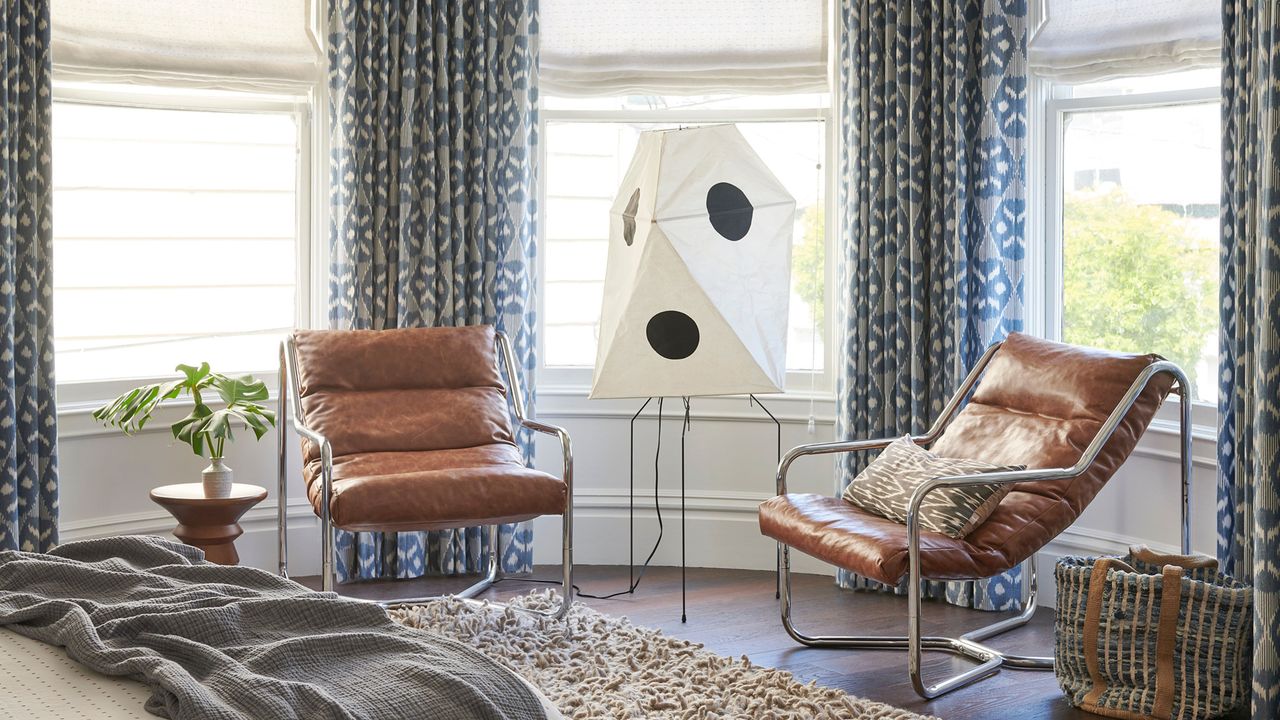

When considering somewhere to live, a space with plenty of natural light is often high on people's priority lists. But as someone who recently discovered her favorite velvet sofa had become completely faded due to prolonged sun exposure, I have to ask: can too much natural light actually be a bad thing?
The short answer is yes. While I'm certainly not about to claim it's all bad — natural light helps us wake up naturally, it provides us with a healthy dose of Vitamin D, makes rooms feel bigger, and even helps our indoor gardens grow — too much natural light can have its pitfalls. It can overheat your home, increase electricity bills, prematurely fade furniture, bleach paint colors and art, and cause uncomfortable glare.
So, what can you do when your home gets too much sunlight to cool down a room and keep your design scheme looking its best?
How to reduce too much natural light in your home
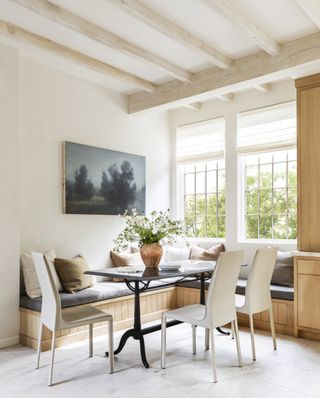
Aside from the more practical disadvantages, too much natural light can actually drain a space of its energy and leave it feeling — yes, believe it or not — cold. We've found four solutions that are not only stylish options, but are also reasonably inexpensive and easy to achieve.
Here's what to do.
1. Install curtains, blinds and awnings in the brightest rooms
If you haven't already got them, installing modern window treatments such as curtains, blinds or external awnings can be one of the most effective ways of reducing the amount of natural light spilling into a space at any one time. But with a range of options out there — from relaxed Roman blinds to curtains, shutters and sheers — it’s important to make sure you select the most appropriate style for the specific requirements of your room.
While linen sheers may look beautiful gently floating in the breeze, they’re pretty terrible at reducing the amount of natural light in a space. And while blackout curtains and heavy drapes may be more practical, you don’t want to be living in complete darkness around the clock.
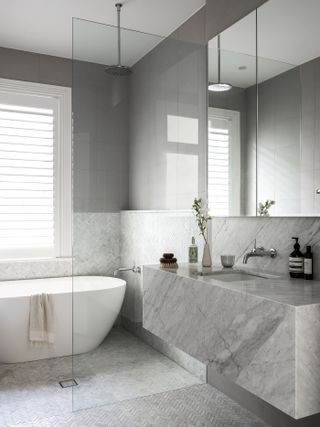
Something like vertical shutters or Venetian blinds may be your best option, as their blades can be titled and adjusted to effectively redirect light around a room, and away from, say, your sofa (yes, I’m still bitter) or from creating unwanted glare on your TV screen.
Don’t forget that different window treatments can often be combined in a stylish way — for example, layering sheer and blackout curtains — meaning you don’t necessarily need to replace what you already have, but rather pair something prettier with something more practical for the best result.
2. Consider a window tint in particularly bright spaces
In instances when new window treatments aren’t an option, you could instead opt for a window tint. These films are relatively inexpensive and something you can easily cut to size and install yourself.
'Window tints and films can significantly mitigate the issues caused by excessive natural light. They help reduce heat gain inside the home, thus lowering central air costs and improving comfort,' explains Jeramy Sibley, President of Glass Doctor, a Neighborly company. 'These films also reduce glare on screens and protect the interior from UV rays that cause fading in fabrics, carpets, and furniture. In winter, these films help retain heat, contributing to energy savings by reducing heating costs.'
Window tints also provide an added layer of privacy, with many styles offering a ‘see in, not out’ reflective design. 'Beyond practical benefits, window films can also enhance privacy and security by strengthening the glass against breakage and obscuring views into the home from the outside,' adds Jeramy.
It’s worth noting, however, that these films may slightly dim or distort your outward-facing views, but the good news is that they won’t get in the way of any existing window treatments, meaning you can still dress your window to match your design style.
3. Opt for a wall paint color with a warmer tone

Warm shades such as Benjamin Moore's Springtime Peach 214-50 help absorb light while still leaving the room feeling light and airy.
Just as there are recommended wall paint colors for rooms without much natural light, there are colors that work best for rooms flooded with it.
While white paint for interior walls is often a go-to in out homes, bright white hues will reflect the light in sunny rooms, causing uncomfortable glare and leaving the space feeling bleached, cold and clinical.
It’s best to choose wall paint colors with a more colored undertone, including grays, blues and greens. Helen Shaw from Benjamin Moore, recommends layering soft blush tones, sage greens and taupe shades to absorb excess light while ensuring the space stays bright and airy.
'The light in a south-facing room is warm and bright so choosing a green such as [Benjamin Moore's] Kensington Green 710 will almost glow in the brightness whilst also helping to balance the light,' says Helen.
'A blush pink such as Springtime Peach 214-50 can work in every room of the home, from the bedroom to a dining room, and combined with the brightness of a south-facing room it will look fresh and polished,' she adds.
Another top tip is to use matte vs gloss paint, as this will also help reduce the amount of light bouncing around the space.
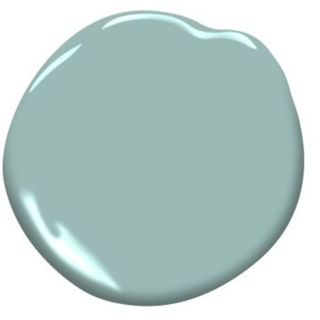
Price: from $56.99/gallon
Sheen: Satin/Pearl, Semi-Gloss, Matte, Eggshell
4. Revisit your furniture and room layout
While the orientation of your home is not something you can easily change — don't worry, we're not going to suggest you do — it has a lot to do with the amount of natural light a room receives. Generally speaking, south-facing homes will get the most and most consistent light throughout the day.
What you can do is identify certain corners or areas that receive excessive sun exposure and adjust your furniture and layout accordingly, to ensure certain furnishings don't discolor or fade (natural fabrics such as cotton, silk, linen, and wool are most susceptible) or that large appliances, such as your refrigerator, aren't sitting in the sun and costing you more to run.
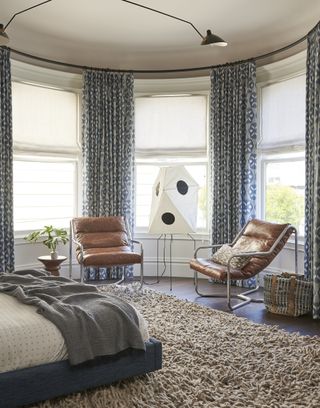
'Ideally, do not place the TV opposite a window, especially one that gets direct light when the sun is low in the sky,' says Heather Peterson, principal designer at Minneapolis-based studio Heather Peterson Design. 'Keeping furniture, especially upholstered, away from windows and floating it in the room is a useful strategy as well.'
For furniture that can't avoid exposure, she recommends opting for certain hard-wearing materials. 'Take your cues from patio furniture. Metal and stone fade more slowly than wood. While wood is ubiquitous in furniture, don't be afraid to mix the other materials in,' she says. 'Metal can be great for consoles or side tables, stone can make a beautiful coffee table.'
And then there are the ones to avoid: 'All natural fibers are vulnerable but some are worse than others,' Heather notes. 'I would avoid wool, which can fade quickly, and silk, which the sun will disintegrate over time.'
So yes, too much natural light can be a bad thing when it comes to our homes, but the good news is there are plenty of options — and stylish ones at that — that you can do to reduce its more uncomfortable impacts.
Be The First To Know
The Livingetc newsletter is your shortcut to the now and the next in home design. Subscribe today to receive a stunning free 200-page book of the best homes from around the world.

Emma is the Interiors Editor at Livingetc. She formerly worked on Homes To Love, one of Australia's leading interiors websites, where she wrote for some of the country's top publications including Australian House & Garden and Belle magazine. Before that she was the Content Producer for luxury linen brand, CULTIVER, where she nurtured a true appreciation for filling your home with high-quality and beautiful things. At Livingetc, she spends her days digging into the big design questions — from styling ideas to color palettes, interior trends and home tours. Outside of work hours, Emma can often be found elbow-deep at an antique store, moving her sofa for the 70th time or mentally renovating every room she walks into. Having just moved to London, she's currently starting from scratch when it comes to styling her home, which, while to many may sound daunting, to her, is just an excuse to switch up her style.
-
 These Chess-Inspired Candles Are My New Fragrance Obsession — They Smell (and Look) Amazing
These Chess-Inspired Candles Are My New Fragrance Obsession — They Smell (and Look) AmazingBecome a grandmaster of fragrance. Inspired by the ancient game, MIND GAMES' candles ignite sophistication and thoughtfulness with every strike
By Devin Toolen Published
-
 I Tested the Ninja Swirl by CREAMi and the Result? Not Exactly What I Expected
I Tested the Ninja Swirl by CREAMi and the Result? Not Exactly What I ExpectedThe supersized, soft-serve-spinning sibling of the viral Ninja CREAMi is taking over our FYPs. But does it deliver?
By Julia Demer Published
